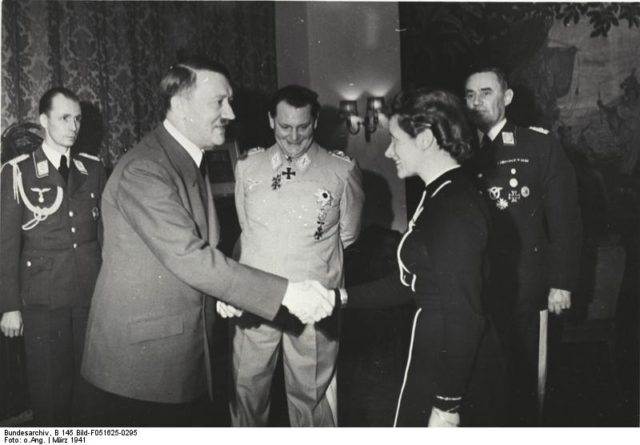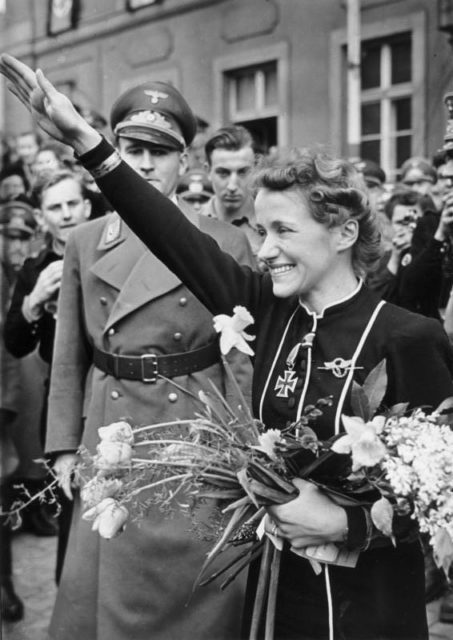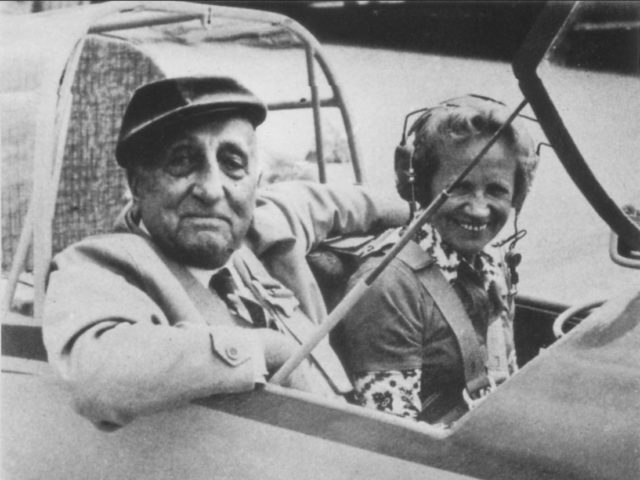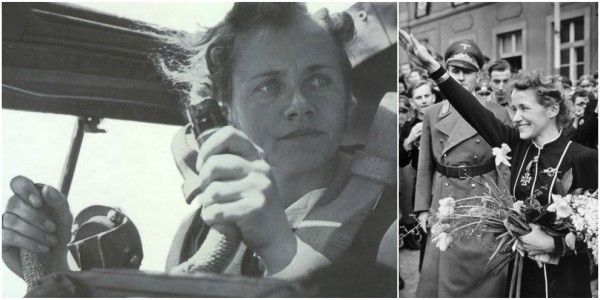Women who distinguish themselves in the traditional ‘men’s occupations’ are usually either praised as fascinating or abased as exceptions to the rule. The controversial life of the famous pilot, Hanna Reitsch, might be the best proof that not everything is black and white.
Hanna Reitsch was born in 1912, into a Silesian upper-middle-class family. By the age of 14, she was dreaming of becoming a flying missionary medic in Africa. A rather specific choice for such a young teenager, one might think. Not necessarily. On the one hand, her rigid ophthalmologist father pushed her towards medicine. On the other, she was fascinated with flying ever since she was a little child. This struggle for compromise would not last for too long.
In 1932, while studying medicine at the University of Kiel, she began flight training at her local gliding school and joined the German Air Mail amateur flying school. Her talent and dedication were outstanding and the very next year she was invited to become a glider pilot and instructor in Honberg. She quit her studies and even made a contract with a film company to work as a stunt pilot. In only two years her dream pushed her to set an unofficial endurance record for women and fly to South America, where she became the first woman ever to earn the Silver C Badge.
In 1935, Reitsch became a test pilot for the German Institute for Glider Research. Two years later, she was posted to the Luftwaffe testing center. She was a test pilot on the Junkers Ju 87 Stuka and Dornier Do 17 barrage balloon-cable fender projects, for which she received the Iron Cross, Second Class, from Hitler in 1941. She proceeded to become the first female helicopter pilot, and among the first to fly the first fully controllable model, Focke-Achgelis Fa 61, for which she earned the Military Flying Medal.

She was outgoing and seemed to care for nothing other than flying. The Nazi regime loved her attitude, along with her ‘Aryan look’. Thus she became a star of Nazi propaganda. As the war was brewing, she was test flying transport and troop-carrying gliders, later to be used during the invasion of Belgium.
In 1942, she crash-landed while testing the rocket-propelled Messerschmitt Me 163 Komet and was awarded the Iron Cross, First Class. After recovery, she spent some time flying at the Eastern Front. Two years later, the looming defeat and her ever tighter links with the Nazi regime led her to suggest an idea to Hitler. Her plan was to assemble a group of suicide pilots who would serve as human glider-bombs. Hitler gave his approval, but the preparations took too long and the project was never realized.

During the last days of the war, Hitler dismissed Hermann Göring as head of the Luftwaffe and appointed Robert Ritter von Greim to his place. As the Soviet troops were entering Berlin, Hitler demanded that Greim and Reitsch meet him in his bunker. The new suicide plan was deeply personal – Hitler gave them two arsenic pills. Alas, two days later, on 28 April 1945, he changed his mind and tasked them with coordinating the Luftwaffe attack on the Red Army and punishing Heinrich Himmler, who was attempting to capitulate.
Soon after, Reitsch and Greim were captured by the Allies. When asked about Hitler’s decision to from 28 April, Reitsch and Greim allegedly gave the same answer: ‘It was the blackest day when we could not die at our Führer’s side.’ Reitsch further remarked that Hitler’s bunker was ‘the altar of the Fatherland’, before which everyone should kneel. Greim took a pill and committed suicide. Reitsch decided to keep hers. Eighteen months later, she was free.
After the war, she pursued a career in gliding and once again started breaking the records. She was the first woman to compete in the World Gliding Championships, where she took the bronze medal in 1952. In 1959, Indian Prime Minister Jawaharlal Nehru invited her to start a gliding center in New Delhi.
This endeavor drew the attention of Kwame Nkrumah, the socialist Prime Minister of recently liberated Ghana. In 1962, she moved to Ghana where she lived for the following four years, founding the first black African national gliding school.

But how did this ideological shift come about? From proudly serving an extremely racist regime to supporting black socialists in post-colonial India and Africa. In her own words, she felt remorse for her previous ‘presumptuousness and arrogance’. ‘Earlier in my life, it would never have occurred to me to treat a black person as a friend or partner’, she once confessed to an author.
Nevertheless, her final days left her opinions on this chapter of her life open to interpretation. In the last interview she gave to a Jewish-American photo-journalist, she stated that she feels no shame for her prior beliefs – rather, that the Germans’ true guilt should lie in actually losing the war. In August 1979, she sent a short letter to a British aviatrix colleague in which she wrote that unlike her appetite for flying, no one outside Germany really understood her passionate love for the Fatherland. The letter, written in English, ended with a puzzling sentence, wrote in German: ‘It began in the bunker, there it shall end.’
On 24 August, Hanna Reitsch died. No autopsy report is available, and the official record states that the cause of death was a heart attack. Her arsenic pill was nowhere to be found.
